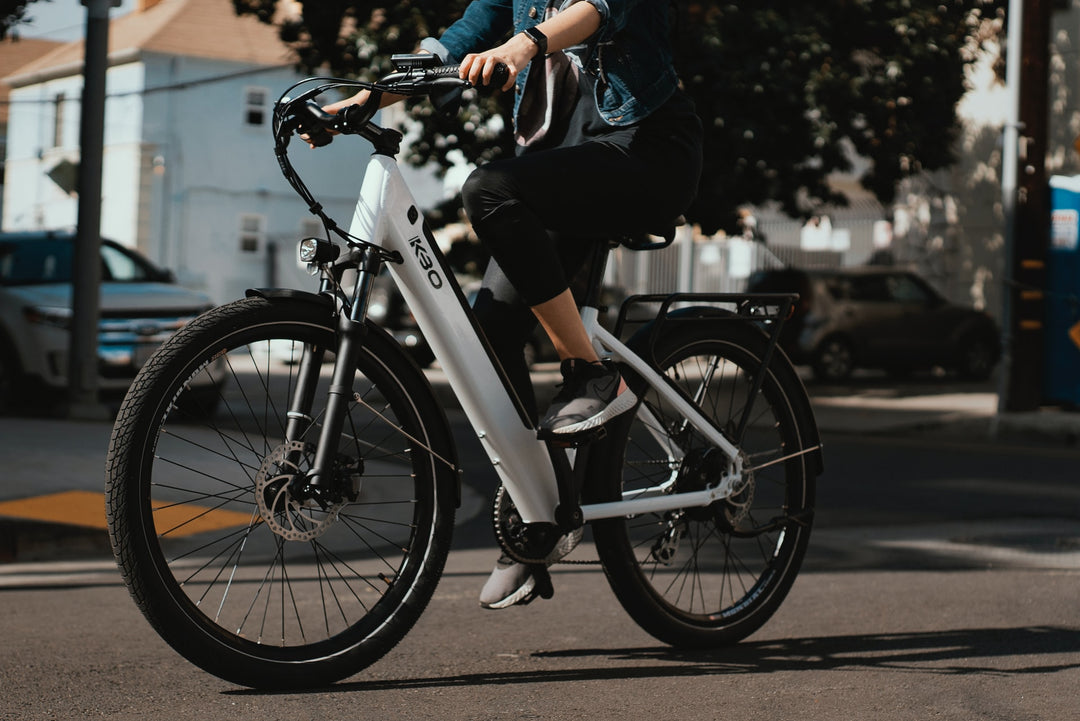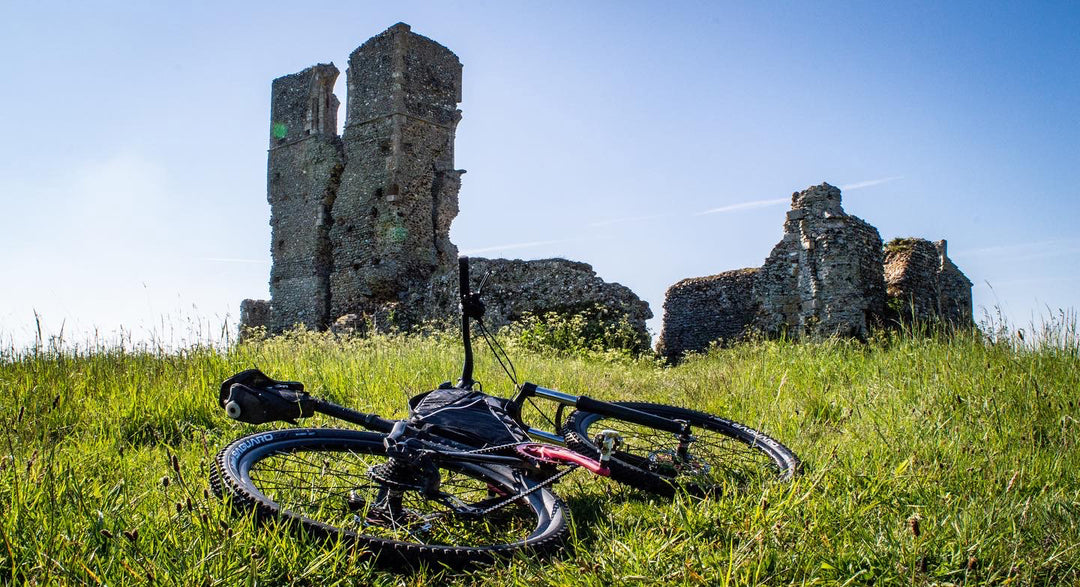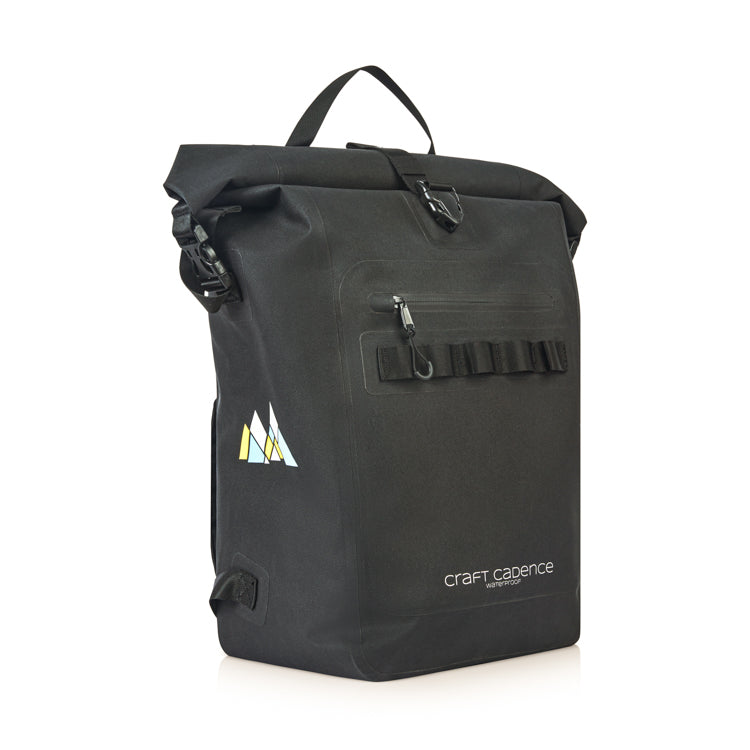A Local's Guide to London's Cycle Superhighway - CS3
Cover Photo Credit: Matt Brown
Craft Cadence is a UK based cycling bags and pollution masks brand that helps commuters stay organised and breath clean air. This is part of series of blogposts covering London's cycle superhighways, from a commuter's perspective. Feel free to comment on your experience of using this superhighway - do keep things civil though!
History
CS3 is a 13km long segregated cycle in East London, which connects Barking in the East to Tower Gateway. The route was constructed in 2009, as part of then Mayor, Ken Livingston, original 10 planned new cycle routes, called Barclays Superhighways. The project aimed to increase cycling in London by 400% by 2025, compared with the levels in 2000.This original round of planned cycle lanes kick started London's cycle revolution, and can be seen as the start of the term ‘cycle superhighway’, later championed and used by Boris Johnson and TfL projects.
In 2016 an extension was developed, from Tower Gateway westwards to Westminster. By 2018, a further section from Westminster will go though Hyde Park and onto Lancaster Gate, while there are proposals for additionally extending this to Acton too. These extensions all form part of TfL’s ‘East-West Cycle Superhighway’. When completed Barking in the east will be fully connected to Acton in the West, which could well be the longest stretch of cycle infrastructure in London.
However, this article is a guide to the original Barking to Tower Gateway highway only.
Cycling Guide
Where the route starts in Barking a fully segregated cycle lane follows the A13 road. Being by an A road, as expected it is very noisy. However the cycling surface is fairly well maintained and comfortable ride on. If you fancy a quick escape from the speeding lorries and cars, the route goes directly past East Ham Nature Reserve & Visitor Centre and at Bow Creek the Limmo Peninsula Ecological Park – both are tranquil spaces to enjoy a quiet moment to yourself and see some of the Thames’ wildlife.
It is at Bow Creek that the cycle lane transitions from segregated cycle path to simply paint markings on quiet roads. The route wiggles it’s way through Blackwall onto Poplar High Street, where you have to follow the patchwork of blue ‘CS3’ cycle symbols on the road. This is the busiest section of the route, and a cyclists must negotiate a few sets of traffic lights and parked cars. However, this is a 20mph zone, and even inexperienced cyclists should be comfortable doing this leg of the journey. Continue through Limehouse; at Narrow Street (It’s actually quite wide having been opened up in 1977 redevelopment) you can take slight detour, taking any path to your right to check out the eclectic mix boats moored up in Limehouse Marina. This is the oldest part of Limehouse, with many buildings dating from the 18th Century.
Past Limehouse, the route joins onto Cable Street, and the welcome return of segregated cycle lanes. Follow the cycle lane and as you go past Shadwell station, look on your right for Cable Street Mural – Painted in 1979 to commemorate the Battle of Cable Street in 1936, where an extreme fascist group caused rioting in the area. Head on as the cycle lane continues all the way to the end of the route, Tower Gateway. It is a somewhat abrupt end; the cycle lane leads onto to a complex junction with crossings. So advice is to slow down and take your time in identifying the road markings and pedestrian crossings. At the end point, you are now only a minute away from the Tower of London, well worth having a walk around. If you are feeling peckish, a short walk away is Lmnh Kitchen – Which is a spin off from renowned Cycle Cafe ‘Look Mum No Hands’; nice coffee, food and you'll be sure to find fellow cyclists to chat with too.
Review
So, what is the verdict on CS3. The route is exceptionally long, and for most part it allows a safe, protected and simple way of cycling into the heart of London. Signage is well placed with both road and sign markings, even on the tricky road sections. Starting in Barking, the route takes you past many nature parks and wetlands, and at Cable Street you are surrounded by the history of London’s docklands and trading heritage. Thus, there is plenty of places to catch your eye. This makes it a great route to do on the weekend when you have some time to explore.
When it opened in 2009, and a survey from 2014, the route had experienced an 83% increase in cyclists, demonstrating its popularity. And that is the issue, its doesn’t have capacity to allow further rise in cycling. When CS3 was built, fully segregated cycle lanes were a dream not a reality for Londoners. Move forward to 2017, and TfL are creating bigger, wider fully segregated cycle infrastructure. CS3 now looks dated; the narrow cycle lanes at peak times are dangerously congested with cyclists of differing speeds with little room to jockey for position or even think about overtaking. This is particularly true of the Barking A13 section, with extremely narrow lanes. Combine this with having to negotiate a mid-section on road, this is no longer the jewel in London’s cycle infrastructure crown. CS3 is now fully joined up with a new route to Westminster, and as mentioned there are plans to extend this in the future. This could generate a rise in cyclists on CS3, further exasperating capacity issues. TfL should consider this effect, and explore possibilities of widening the CS3 or creating strategic alternative ‘queitway’ routes which could relieve the pressure in key sections.
Yet, this is not an isolated case; when TfL opened Vauxhall Bridge cycle junction, and the section of N-S superhighway over Blackfriers Bridge in 2016, from day one they counted greater cyclists using both than the infrastructure were designed for. This demonstrates the sustained increase in cycling in London. If cycling infrastructure is built, cyclists will flock to it. Sadly, the older projects, like CS3 are a victim to London’s cycling success. Firstly, this should be seen as a positive too, as the more people cycling will only further help transform London streets to be cycle friendly. Secondly, it raises the question to local authorities and designers – how far ahead do go when planning cycle infrastructure? Can we stop the latest superhighways falling into the same trappings as CS3?



